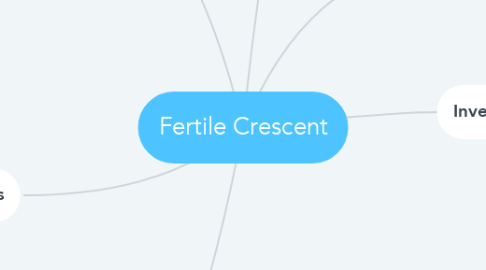Fertile Crescent
by Alex Ortega


1. Facts
1.1. In this part settled the fists agriculture communities of the Middle East and Mediterranean.
1.2. By the time of the fall of the Roman Empire most of the greatest civilisations of the region of the fertile crescent were in ruins.
1.3. The first human that domesticate animals live in the Fertile Crescent around the 10,000 BC.
1.4. The term Fertile Crescent were popularised by the University of Chicago.
1.5. Where the first libraries some 5,000 years ago.
1.6. Prehistoric seedless figs were discovered at Gilgal I in the JordanValley, suggesting that fig trees being planted some 11,400 years ago. Cereals were already grown in Syria as long as 9,000 years ago.
2. How is it?
2.1. Is approximately a semicircle, with the open side toward the south, having the west end at the southeast of the Mediterranean, the center directly north of Arabia, and the east and agh the north end of the Persian Gulf.
2.2. Includes a roughly crescent shaped area of relative fertile land.
3. Ancient countries and Societies
3.1. This are some examples of the world´s earliest civilization.
3.1.1. Babylonia
3.1.2. Egypt
3.1.3. Assyria
4. Today?
4.1. Today the Fertile Crescent, often referred to as a cradle of civilization, covers Israel,Lebanon Jordan, Syrian, Norther Egypt and Iraq.
5. Problems in the region
5.1. Farmers in southern Mesopotamia had to protect their field from flooding each year, except Northern Mesopotamia which had just enough rain to make some farming possible. To protect against flooding, they made leaves.
5.2. Another problem has been salination (gradual concentration of salt and other minerals in soils with a long history of irrigation.
6. Invention and Human Activity
6.1. What gives the region it´s nickname?
6.1.1. There is also evidence from the region of writing and the formation of heretical evidence.

